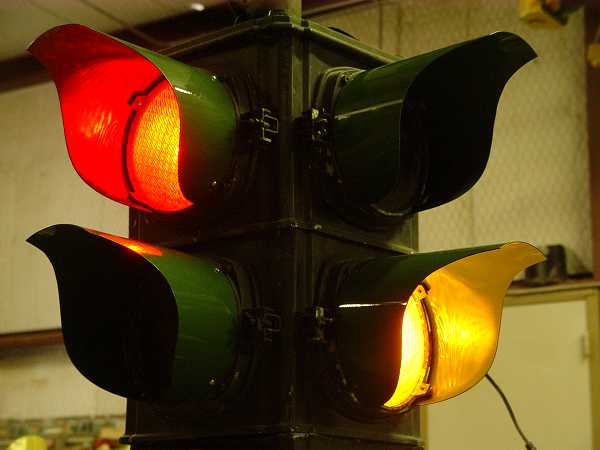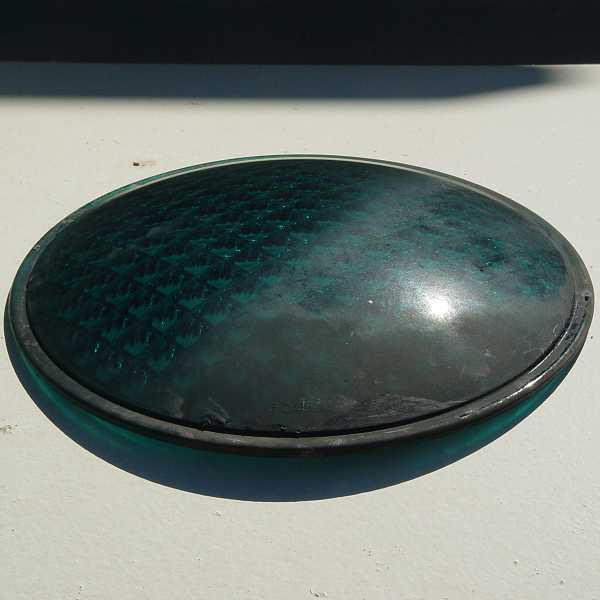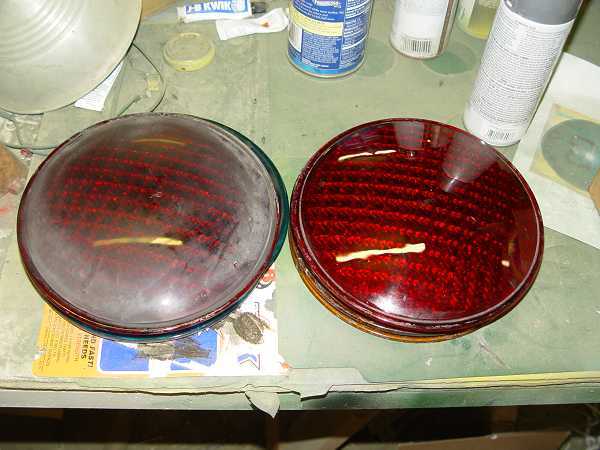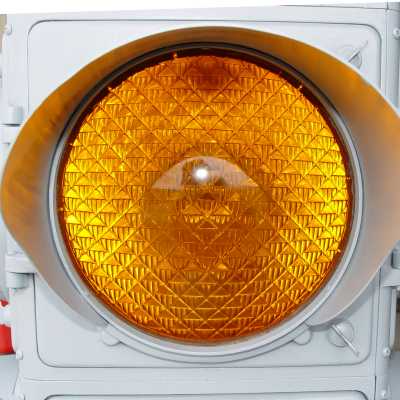Collecting Traffic Signals
|
| RESTORING LENSES |
|
The end game for any serious traffic signal collector is to light up that restored old signal and watch it operate.
By its nature a traffic signal is highly dependent upon properly functioning optics - a good reflector, the proper bulb and a clean lens that a proper amount of light will pass through. This feature illustrates the methods that I use to safely remove built up haze and film from lenses for signals that I am restoring. |

|
|
Lenses can have all sorts of materials built up on them ranging from hydrocarbons from motor vehicles, dust, paint overspray, brushed on paint, rust and even calcified minerals from hard water - especially if the signal has been sitting on the ground for a long time since being removed and was "watered" by lawn sprinklers. Usually all these materials can be safely removed but it may take a little ingenuity.
Typically I will rinse the lenses in a bucket of soapy water, then use a cleaning brush to clean any dirt and residue from the inside (diffused side) of the lens. Then glass lenses will go through a cycle in the dishwasher. If a lens has a thick coating of hydrocarbon haze I will soak it in a bucket of Butcher's Bare Knuckles Floor Wax Stripper (available at commercial janitorial supply houses.) Half of the lens on the right was soaked in Butcher's to show how effective it is. |

|
|
Once the lens has been completely rinsed and dried, I'll clean it off with a good quality window cleaner and wipe it dry. If the lens still shows haze or residue, I will buff it vigorously with fine steel wool. This process works best when the lens and steel wool are dry. I'll occasionally clean the lens with glass cleaner during this process to figure out where I missed any haze.
The photo on the right shows a clear "before" and "after" comparison. |

|
|
In the event a lens is marked up with brushed on paint, I'll brush a dab of paint remover on the paint. Once the paint starts to bubble, I'll dip the lens in the Butcher's Bare Knuckles bucket.
I avoid scraping on any lens with a scraper or knife as these tools can shave the gloss off of a lens. These tips apply to glass lenses only. Plastic lenses require a more cautious approach as chemicals and abrasives can etch or scratch a plastic lens. A little patience and using the right materials can have nearly every glass lens shining like new without having to send it out to a professional glass polisher. |

|